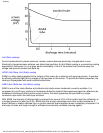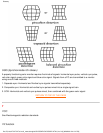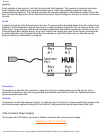
V
Vertical dot pitch
See Dot pitch.
Vertical scanning frequency
Expressed in Hz, this is the number of fields written to the screen every second in interlaced mode. In
non-interlaced mode vertical scanning frequency is the number of frames (complete pictures) written to the
screen every second (also known as refresh rate).
Vertical sync pulses
A train of square shaped waveforms that define the start of a new frame.
VESA
Video Electronic Standards Association, a consortium of manufacturers formed to establish and maintain
industry-wide standards for video cards and monitors. VESA was instrumental in the introduction of the
Super VGA and Extended VGA video graphics standards (see Video graphics adapters) with a refresh rate of
70 Hz, minimizing flicker and helping to reduce operator eyes fatigue and stress.
Video dot rate
See Dot rate.
Video graphics adapters
A card equipped with a character or graphic generator and video memory, which maps to the screen. A
microprocessor scans video memory and translates bit information from the computer into displayable video
signals for the monitor. These cards comply with various standards that determine the nature and quality of
the display.
VGA (Video Graphics Array), introduced in 1987, was the first analog card. It offered still higher resolution
than EGA: 640 X 480 pixels for graphics and 720 x 400 pixels for text, and a color palette of 256 colors. VGA
could also emulate EGA and CGA.
Super VGA, devised by VESA in 1989, offers a resolution of 800 x 600 pixels.
Extended VGA, introduced by VESA in 1991, offers a top resolution of 1024 x 768 pixels (non-interlaced) and
a refresh rate slightly higher than IBM's XGA 8514A.
High-end, graphics adapters, introduced over the last three years for professional workstations, offer top
Glossary
file:///D|/rita/LF2/LF2/LFa1/multi_manual/english/GLOSSARY/GLOSSARY.HTM (17 of 18) [8/29/2001 2:41:21 PM]


















